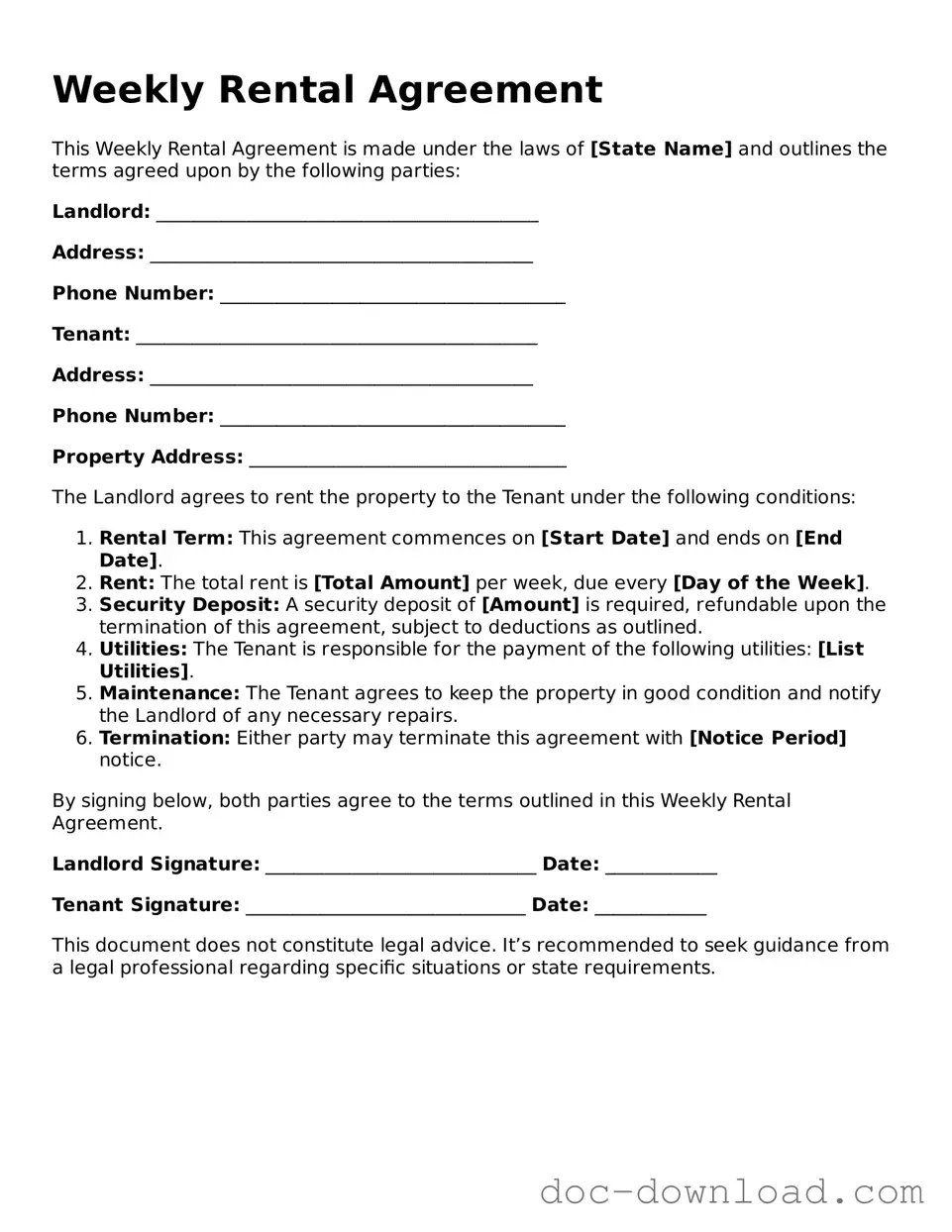The Lease Agreement is a document that outlines the terms and conditions under which a tenant rents a property from a landlord. Similar to the Weekly Rental Agreement, it specifies the duration of the rental period, payment details, and responsibilities of both parties. However, a Lease Agreement typically covers longer rental periods, often ranging from six months to a year, and may include additional clauses regarding maintenance and termination procedures.
The Month-to-Month Rental Agreement allows tenants and landlords to enter into a rental agreement that renews automatically each month. Like the Weekly Rental Agreement, it provides flexibility for both parties. This document outlines payment terms, notice periods for termination, and other essential conditions. The primary difference lies in the duration of the rental commitment, with the Month-to-Month agreement typically requiring a longer notice period for termination.
The Sublease Agreement permits a tenant to rent out their leased property to another individual. This document shares similarities with the Weekly Rental Agreement in that it establishes rental terms and conditions. However, it specifically addresses the relationship between the original tenant and the subtenant, including responsibilities for payment and property maintenance. Approval from the landlord is often required for a valid sublease.
The Room Rental Agreement is designed for situations where an individual rents out a room within a larger property. This document is akin to the Weekly Rental Agreement in that it sets forth the rental terms, including payment schedules and shared responsibilities. However, it typically focuses on a single room rather than an entire unit, and it may include clauses regarding shared spaces and utilities.
The Commercial Lease Agreement is used for renting commercial properties, such as office spaces or retail locations. Similar to the Weekly Rental Agreement, it outlines the terms of occupancy and financial obligations. However, it often includes additional provisions specific to commercial use, such as zoning requirements and business hours, which are not typically found in residential agreements.
Understanding the components of a comprehensive Lease Agreement guide can simplify the renting process. This document serves as a crucial foundation for formalizing the rental relationship between landlords and tenants, ensuring both parties are aware of their rights and obligations throughout the leasing period.
The Rental Application is a document prospective tenants fill out to express interest in renting a property. While it is not a rental agreement itself, it is similar in that it gathers essential information about the applicant. This document includes personal details, rental history, and references, allowing landlords to assess the suitability of a tenant before entering into any rental agreement.
The Tenancy Agreement is a broader term that encompasses various types of rental agreements, including the Weekly Rental Agreement. It outlines the rights and responsibilities of both the landlord and tenant. While the Weekly Rental Agreement focuses on short-term rentals, the Tenancy Agreement can apply to both short and long-term situations, providing a comprehensive framework for rental relationships.
